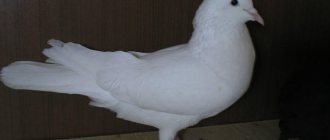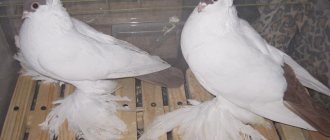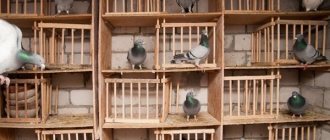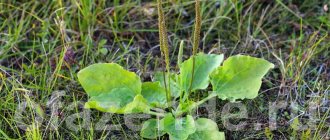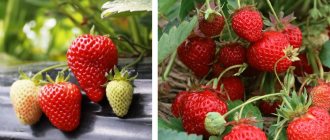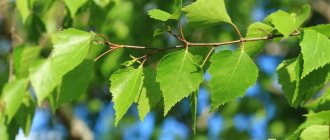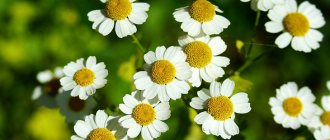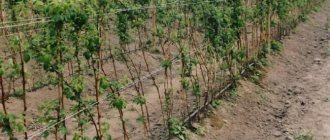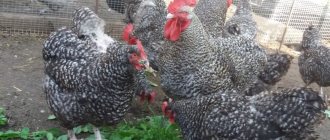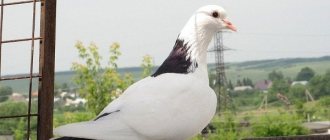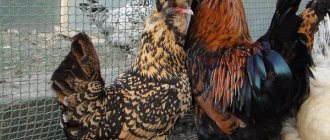Poultry farming » Pigeons
0
1740
Article rating
Kira Stoletova
Fighting pigeons are birds endowed with a beautiful appearance and a special flight technique. The flight of fighting pigeons is distinguished by its beauty. The fighting pole varieties are especially famous.
Birds of the world are unpretentious to living conditions, thanks to which they are able to survive even in hard-to-reach areas. In Russia there are so many slaughter breeds that it is difficult to count them.
Fighting pigeons
Training for fighting pigeons is a mandatory part of the daily routine.
Where did such an interesting name for birds come from? No, they do not participate in fights, fight is a special sound that birds make while flying. They beat their wings, causing noise to be heard.
All birds of fighting breeds are high-flying and playful: they are able to rise to a height of 20-25 m.
Fighting breed of pigeons: varieties, description
There are about 800 breeds of pigeons all over the world, which are divided into two groups: domestic and wild.
The former, in turn, are divided into meat, sports (postal), flight (racing) and decorative. Fighting pigeons, which will be discussed, belong to the flight subgroup. In addition, they also have a number of other features: unpretentiousness in food and maintenance, as well as a beautiful appearance.
- Fighting pigeons also have the following advantages:
- The ability to stay in the sky for a long time;
- strength and endurance;
- good orientation on the ground, which allows them to quickly find their way to the house;
- Possessing a unique style of flight, performing somersaults.
In addition to the fact that these beauties stage such fascinating performances in the air, they are also excellent parents: they hatch their offspring with great love and care, and then carefully look after them.
There are the following varieties of fighting pigeons:
- Thurmans;
- Chile;
- Blagodarnensky;
- Armavir;
- Krasnodar;
- Baku hryvnia;
- Uzbek, etc.
North Caucasian
Another popular variety of fighting pigeons is the North Caucasian. The center of its breeding in Russia, where selection of this direction is actively carried out, is Krasnodar.
The most popular breeds in this direction are white-headed kosmachi, white-breasted, colored, white-bearded and others. The pride of the Caucasus can be called the North Caucasian Kosmachi, which is popular due to the wide variety of colors and excellent flight performance. Watch the video at the end of the recording with the flight of this bird, and you will understand what majestic beauty it has.
Breeds of fighting pigeons
There are several breeds of fighting birds, differing primarily in their appearance: the color of the plumage and patterns on the feathers. They also have various physiological characteristics, such as the size and shape of the head, the height of the paws, and the shape of the body.
But the most important thing for pigeons of this breed is the complexity and height of flight, especially the entrances to the pole. Some breeds are capable of sharply descending, others - rising upward, as if walking, and still others - often flapping their wings while performing beautiful pirouettes. Moreover, fighting pigeons can perform such miracles of acrobatics at different ages.
Representatives of some breeds begin their tricks while still chicks (at three months), others - only a few years after birth.
Experienced breeders prefer to keep birds that begin to show their skills as late as possible. For example, these could be Central Asian breeds. Among the breeds of early manifestations of fighting, we can distinguish Baku, North Caucasian, and Iranian.
Therefore, experienced pigeon breeders do not recommend like-minded beginners to breed this breed. Taklu can often be found on the Black Sea coast, where birds of this breed perform a purely decorative function. Vacationers admire the flight of pigeons, shoot videos, take photographs so that the memory of such an unusual vacation remains for many years.
Armavir fighting
Another rather remarkable place where people are fond of breeding this particular breed is the proud and majestic Caucasus . Amazingly beautiful birds were bred here, with a rather long beak and plumage covered with continuous patterns.
The most common and most beautiful type of fighting pigeons is the Armavir white-headed kosmachi. This breed has been improved over several centuries. Also considered the pride of the Caucasus are the North Caucasian cosmachi, who have excellent flying qualities.
Iranian fighting
But the most ancient state where pigeon breeders have long been engaged in breeding the slaughter breed is Iran . For several centuries, breeders worked on the creation of the Iranian fighting pigeon and achieved perfection, although in terms of external features the bird is practically no different from its fellows, except for the feathering on the legs, although there are also bare-legged ones.
The bird's head can be smooth or with a small forelock. A characteristic feature of the Iranian pigeon is its flight. The Iranian fighter is capable of soaring for ten hours without a break. The fight is also unique: it is recorded for a few seconds, and is clearly audible, regardless of the flight altitude.
Uzbek combatants
In Asia they breed Uzbek fighting pigeons . This is a truly unique breed, which is famous for its huge variety of feather colors (about eighty species). In addition, Uzbek birds are distinguished by their head shape, short beak and unique plumage.
Baku hryvnia
This is a special type of fighting pigeon, which is famous for its height and flight duration . For example, the black Baku pigeon is capable of entering a pole at a height of 10 to 15 meters, while performing up to seven somersaults. Baku residents have a spindle-like, slightly elongated body and matte or white plumage (except for the back of the neck). Stripes of rich yellow, red, gray or black are clearly visible on the neck.
Chubby birds have a white forelock in front and a colored forelock in the back. The tail of the Baku hryvnia is painted white, with the obligatory presence of several colored feathers.
A characteristic feature of these pigeons is their motley head and brushes on their legs . The plumage is red or black, the body is slightly elongated, the chest is convex. Chili takes off strictly vertically and, having gained altitude, performs a whole cascade of somersaults.
Krasnodar fighting breeds
These are medium-billed or long-billed birds with yellow or red plumage with a white pattern on the sides and tail. The feathers on the legs resemble bells. The body length of the Krasnodar fighting pigeon is 32-36 cm.
This is the name given to a breed of fighting pigeons that are capable of turning over their head, wings and tail . The quality of somersaults and flight duration are determined by hereditary data, living conditions and training. Thurmans or, as they are also called, rollers, are one of the most popular breeds among fighting pigeons. They have a wide variety of colors - from gray or plain white to variegated.
Read also: Kuban Red chickens: characteristics, tips on keeping and breeding
Blagodarny breed
These birds are characterized by a peculiar coloring , with several variants of feather coloring on the head. The nasal forelock resembles a wide rose covering the wax, forehead and part of the beak. The forelock on the back of the head smoothly merges into the mane. The color of the head and upper neck is pure white or interspersed with red, the rest of the plumage is dark red.
As you noticed, there are a huge number of fighting pigeon species in the world, from which every poultry farmer can choose the one that is suitable for him. However, before you start breeding these magnificent birds, you should carefully familiarize yourself with all their characteristics and care rules.
Uzbek breeds
Pigeons from Uzbekistan are valued all over the world. The names of the breeds come from the color of their plumage. Chicks hatch the same way, regardless of breed. With each molt, their plumage changes. After 3 moults, it acquires the color characteristic of a certain breed:
More on the topic: What breeds are classified as end pigeons?
| № | Helpful information |
| 1 | Ouds are light blue in color. The plumage on the chest is gray, there are belts on the wings |
| 2 | Ruyans - individuals of this breed have a red color |
| 3 | Agarans - the contour plumage is light, but there are orange feathers on the chest and wings. On the wings they form a belt |
Uzbek fighting pigeons are small in size. Their limbs are low. There are long braids on the metatarsus. Birds can be forelocked, two-foreheaded, nose-toothed, or completely forelockless. Birds that have mustaches and sideburns are noted. Individuals have high-flying combat and have a good ability to navigate in space. They rarely get lost.
What are the different breeds of fighting pigeons?
Iran is considered the birthplace of fighting pigeons. They are very popular in Turkey. Certain centers for breeding birds of slaughter breeds have been organized on the territory of the CIS countries. They are found in the Caucasus and Central Asia. These territories have a hot climate, so fighting pigeons are heat-loving and do not tolerate frost and strong humidity. What distinctive features do pigeons have? What breeds are considered slaughter?
Where and under what conditions are pigeons kept?
Fighting pigeons live quite a long time, some individuals live up to 35 years. Average life expectancy is 15 years. But such a long life can only be achieved with proper care. Birds, first of all, need a cozy home and adequate feeding.
Most fighting breeds are unpretentious and are easy to maintain. Training is important, without which fighting pigeons lose their abilities. To accommodate birds use:
- cells;
- enclosures;
- dovecotes.
The room in which pigeons are kept must meet the following requirements:
- availability of high-quality ventilation;
- distance between floor and ceiling – from 1.5 m;
- When calculating the volume of the enclosure, you need to proceed from the condition - there should be 1.5 square meters per individual. m;
- the pigeon house should be equipped with perches, the thickness of the pole should correspond to the circumference of the bird’s paw;
- litter thickness - more than 5 cm;
- monthly – disinfection, cleaning – regularly;
- room temperature – from +20 to +30 °C.
General characteristics
All fighting pigeons have a common distinctive feature. When taking off and flying, they beat the air with their wings, producing loud clicks. They can be heard clearly. Clicks are also made when birds perform acrobatic elements in the air: flips, spinning, hovering. Almost all fighting pigeons are high-flying. They rise into the sky, out of sight.
- having left the dovecote, they make a circling flight; perform several circles over the roof;
- then the birds scatter: flight in bulk;
- The leader usually performs his pirouettes in the air first; he separates from the flock and begins to gain height, performing somersaults and continuously clicking his wings;
- Birds that go into the pillar are especially valued; the height of the pillar can be 15-20 m;
- Having gained height, the pigeon descends slightly in order to again turn over in the air and rise into the sky;
- Having reached its highest point of flight, the leader sits on its tail and seems to be sliding down an air slide;
- Other individuals follow the leader in a similar manner.
Sometimes the leader waits for the whole flock at a height, hovering in the air. After everyone has gathered, the spectacular slide down the hill begins. After completing 2-3 such flights, the birds become very tired. They need rest. They land on roofs or tree branches. They should not be driven away. In 20 minutes. they will take to the air again to resume their dizzying acrobatic moves.
Pigeons may also experience a different fight. The birds do not retreat into the table, but fluff their tails, raising their wings above their heads, and hover in the air. Flight is slow, individuals gain altitude gradually. Their tail is parallel to the surface of the earth. The hovering continues for several minutes, then the pigeons go into the post.
There is also a tape game. The pigeons simply fly, tumbling in the air. Birds rise to an average height. They don't go out of sight. Such a flight at competitions is rejected and not evaluated. But he delights the viewer. Ribbon play is most spectacular among fighting pigeons. Since the birds do not fly high, you can clearly see all the tricks they perform.
When purchasing a fighting pigeon, you need to inquire about its parents. If they were not distinguished by high flight, then their offspring will not rise high into the sky. Birds that fly low are bred by pigeon breeders who do not seek to compete in competitions, but simply enjoy the beautiful fight of their charges.
Fighting pigeons are well oriented in the area. They can stay in the air for 6-9 hours. Birds almost never get lost. You should pay attention to the fact that young animals do not always cope with combat. Spinning in the air, individuals can lose their balance. In this case, the flight may end, at best, in injury.
Workout
In order for pigeons to fully demonstrate their flying qualities, it is necessary to devote a lot of time to training. Baku residents begin to train from the age of 30-40, with the exception of sick and weakened birds. A pigeon’s individual style will only be formed at 2-3 years of age, so the owner will have to be patient. Classes are held in clear weather in an open area outside the city.
For proper flight, Baku residents are regularly trained - released into open space
Table 1. Instructions and rules for training Baku residents
| Step, no. | Description | Photo |
| Step 1 | 3-4 days before training, transfer the pets to a diet that includes light food, and give the birds something to drink an hour before the flight. Females should not be trained two days before and one day after laying eggs, and parents should not be removed from their newborns until the babies are one week old | |
| Step 2 | Deliver the pigeons to the training site in spacious cages so that they are not cramped | |
| Step 3 | Release pigeons individually, no more than 8 at a time. You cannot mix old pigeons with young ones, or males with females. |
Video – Training of Baku breed pigeons
The best results are shown by pigeons that train from 5-7 months of age. Indicators of an exemplary fight are the correctness and cleanliness of the bird exiting to perform a somersault. She should perform the movements easily, not fall back or lose height. Do not despair if the games and battles of young Baku residents are not as clean and impressive as they would like. Over time, pets will demonstrate the flight characteristics that are inherent in them genetically.
Representatives of the Baku breed know how to find their way home
Before training pigeons, it is recommended to look at the weather report for the near future. Representatives of the Baku breed are well oriented in space, but unfavorable weather conditions (strong wind, precipitation, thunderstorms) can disorient them, as a result of which the pets get lost. If birds were born from the third or fourth generation of birds bred in the same nursery, they practically cannot disappear without a trace, since the ability to return home is transmitted genetically.
The Baku breed of pigeons is popular among breeders due to its attractive appearance, endurance, and flight characteristics. With proper feeding and regular training, its representatives can be raised into champions who will become the pride of the owner.
Varieties of fighting pigeons
Poultry farming takes up a large part of modern farming. And if chickens, geese, ducks and turkeys are raised for consumption or sale, then pigeons have a more decorative purpose.
Of course, in the last century these birds were incredibly important for people: domestic pigeons always find their way to the place where they grew up, and therefore they were used to transmit letters. Now this makes no sense, but they still continue to raise pigeons. Among the 800 breeds, there are 4 main types:
Birds from the first 3 groups do not have any specific characteristics, but among flying pigeons there is a subgroup of birds whose flight is noticeably different from other animals. We are talking about fighting breeds of pigeons.
Read also: What antibiotics can be given to broilers
Breed varieties
The Baku breed is diverse, and its representatives differ from each other in their exterior features and flight qualities.
Broad-tailed Bakuns demonstrate the best flight qualities
- Broad-tailed. Pigeons are able to fly from 2 to 12 hours, have different colors, the most common shade of feathers is white, ashy or milky. The birds have an attractive exterior, well-developed wings and paws.
- Agbash. Unpretentious birds with good breed characteristics. The appearance can be different - the head is smooth or with a pronounced forelock, the legs are unfeathered or covered with feathers. The color varies from individual to individual, but the covering on the head is white.
- Chile. Baku people are medium-sized with strong bones, elongated heads and forelocks. The beak is thin and straight, white or dark in color. The plumage is black or light brown, and there are mottled markings on the cheeks of the head or tail.
- Baku hryvnias. The feather cover is white or matte, fits tightly to the body, on the outer part of the neck there is a bright spot of a yellow, black or reddish hue. Similar markings are observed on the tail.
- Marble. The exterior is similar to the chili, but the feather color is mottled. The birds look attractive, and the color of the feather cover becomes richer after each molt. The head is smooth or forelocked.
Agbash pigeons are hardy, resistant to diseases, and quickly acclimatize
In addition, representatives of the Baku breed are black-tailed or red-tailed, bronze or white. Their exterior characteristics are the same - serious differences are observed only in the color of the feathers.
Interesting! One of the characteristic features by which a purebred Baku pigeon is distinguished from others is the tight fit of the feathers. Breeders claim that in the hands the bird resembles a smooth, streamlined, warm pebble.
Fighting pigeons
They got their name from the unique clapping noises they make during flight. Fighting pigeons have rather narrow wings; the pigeon must make more effort to fly. Narrow wings reduce air resistance; during flight they touch each other with a loud and dull bang. The main feature of pigeons is not the clap in the air; these celestial creatures tumble while flying.
The reason for the somersaults was the powerful and well-developed tail feathers. After a short flight, due to weak wings and a powerful tail, the birds begin to descend strongly; in order to level out the “roll”, the pigeons need to do a somersault so as not to crash on the ground.
Interesting fact! Aerial somersaults cause severe disorientation in the air. And if the bird does not complete a full rotation around “its axis,” it will simply crash to the ground at full speed. Therefore, many pigeon breeders reject slaughter animals that are not able to turn over 360 degrees in the air. Birds' tail feathers are often trimmed to reduce the risk of injury or death.
The group of fighting pigeons includes several breeds that have their own interior and feather color.
Flight specifics
The main advantage of fighting breeds is playing in the air. They show the following types of flight:
- Lifting into a pillar. Birds, rising vertically, flap their wings with great frequency. Having reached its maximum height, the pigeon, turning 360 degrees, sharply somersaults back. Birds can repeat this “exercise” over and over again, and they can also complicate it by using a screw lifting technique.
- Screw. One of the options for lifting into a pole. The pigeon, making a screw, moves upward along a spiral trajectory.
- Paired. Performed by a pair of doves ready to lay. A breathtaking sight - all elements are performed synchronously.
- Tape. This type of flight is often equated by pigeon breeders to a “marriage” - the bird flies and flaps its wings without hovering or rising into a pillar.
- Stuck. Signature trick. Unlike lifting into a pole, it is performed more softly and smoothly. The bird, hovering at one point, quickly flaps its wings.
To assess the quality of flight, breeders have their own criteria. Pigeons are considered defective if the following phenomena are observed during flight:
- aerial stunts are not accompanied by sound;
- There is wing fighting, but there are no somersaults and other aerial stunts;
- performing a circular somersault, makes more rotations than necessary;
- the bird cannot make a 360 degree flip;
- when doing a somersault, he turns more than 360 degrees.
Breeds of pigeons that can make a screw are more likely to be injured than others. During this exercise, they may become disorientated, causing them to hit houses or trees and die.
Breeds of fighting pigeons
There are more than 25 breeds that are classified as slaughter. Their popularity directly depends on their area, and therefore it is difficult to name favorites among pigeon breeders.
Uzbek pigeons
Uzbek pigeons have an incredible number of colors, and therefore it is difficult to classify the plumage. The most common colors are white, black, brown and roan. The dominant color of the plumage may be interspersed with darker or lighter colors. Uzbeks can be without a forelock, with a forelock, and sometimes fighting two-forelocked pigeons are also found in the breed, the plumage of the head of which looks more like a tousled hairstyle.
Baku fighting pigeons
Baku slaughterhouses. You can find “Bakuns” of white, black or cinnamon colors, with light spots all over the body. Marbled birds with white heads are not uncommon. High-flying fighting Baku pigeons live in the southern regions, as they cope well with the heat, but cannot tolerate the cold.
Takla pigeons
Pigeons of the Takla breed. Their color ranges from marbled with a brown breast to brown, glaucous or white. These pigeons are broad-tailed and tall, which often interferes with flight. They are especially valued for their “fight” but are rejected for their play.
Interesting! The game is usually called flight and various figures performed in the air by a bird. The pillar is a sharp decline of the pigeon, at the moment of which it performs multiple somersaults.
Andijan fighting pigeons
Andijan pigeons are incredibly popular among pigeon breeders in Russia and Ukraine. Despite the massive feathering of the birds' legs, they have first-class game. Most often, Andijan breeds are found with white (and brown breasts), black (and white heads), as well as merle with a weakly expressed color. Many ornithologists claim that the Andijan breed is the best fighting pigeons in the world.
North Caucasian fighting pigeons
North Caucasian birds are popular in Iran, but were bred in the North Caucasus. The description should begin with the incredible plumage of the legs. The feathers on the legs can reach a length of 15 cm, which looks specific. The most popular colors: marbled pigeon with a white head and legs, white birds or brown “North Caucasians” with a white head, legs and black tail. These birds have admirers in Armenia and Georgia for their appearance. The animals have a good fight and average game.
Chebarkul fighting pigeons
Chebarkul pigeons. The main color of these birds is white. Often their wings and tail can be black or brown. Judging by the name, it is not difficult to guess that the birds come from the Chelyabinsk region. Due to their strong immune system, they are popular in Germany and Pakistan.
Krasnodar pigeons
Tajik pigeons
Tajik birds. The description of the breed should begin with the fact that these animals are not distinguished by any extravagant exterior, but they are the most fighting pigeons in the CIS countries. The loud clapping, columnar pirouettes and play of these birds are simply amazing. Birds are gray or marbled, but their wings, heads or tails can be white. You can often find completely white individuals with small bluish inclusions.
St. George's pigeons
St. George's pigeons have a dominant white color, interspersed with black or black. The birds are tall on their feet, have good fight, game and posture. Most often they are grown in warm regions, in Pakistan or Turkey.
Iranian fighting pigeons
Iranian fighting pigeons or Iranian tickle pigeons. Their characteristics begin with the fact that tickled animals most often lack feathering on their legs. Thanks to this, these are the fastest fighting pigeons in the world. Persians have a white, gray or merle coloration with splashes of opposite colors.
These are the most beloved fighting pigeons by ornithologists from all over the world, but there are other breeds of fighting pigeons that are not so popular among pigeon fanciers. Their differences in interior indicate that the birds are different by nature, but they have one thing in common - this is the peculiarity of keeping them in winter.
Read also: Parasites in chickens: what are they, how to treat
Interesting! Yellow fighting pigeons are also incredibly rare. Their color is not a feature of any particular breed. Yellow birds are found among all breeds of slaughter.
Origin and features
Fighting pigeons are a very ancient group of breeds. Presumably, the first such breeds appeared in the countries of Asia Minor several thousand years ago. Initially, the so-called fight was based on current flight, which is characteristic of any pigeons and their common wild ancestor - the rock pigeon. Starting current flight, the birds gain altitude, loudly beating their wings, and then glide, bending their wings like a boat. Some birds liked to somersault in the air, reaching some peak point in flight. Games and types of flights became more and more diverse, and gradually separate varieties of well-flying pigeons were formed, which cannot imagine their flight without playing (tumbling) and fighting (loud claps or clicking of wings).
The most ancient breeds of pigeons are considered to be those that appeared in the territories of modern Iran and Turkey.
Much later, these birds began to be bred in Transcaucasia and the North Caucasus.
Another rather ancient center of pigeon breeding was Central Asia. But in the 20th century, many ancient breeds practically disappeared from the face of the earth. However, in the second half of the century, an active resumption of work with flying pigeons began, and now many of the most famous and beautiful breeds find their roots in Central Asia.
These pigeons are very diverse in their appearance. Moreover, if in former times these birds were primarily valued for their flight features, now more and more attention is being paid to the attractive features of their exterior. The sizes and colors of plumage can be very diverse. Many breeds are characterized by unusual feather decorations, both on the head and on the legs and other parts of the body. But still, the most important characteristic feature that unites all pigeons of this type is the ability to fight and play a variety of games during flight.
Fighting pigeons at home
Breeding and keeping birds is not a complicated procedure. It doesn’t matter what features of the feather cover your fighting birds have: big-headed, cheeky, black-tailed, double-toothed or short-beaked, they all cannot tolerate low temperatures. The temperature in the dovecote should be above 16 degrees even in winter.
The note! Headed fighting pigeons are pigeons with a monotonous coat color, but the color of the head is completely different from the entire body. It can be darker than the dominant color or lighter. Most often, heady and cheeky individuals are found in Iranian pigeons.
The diet includes grain or dung. It is also necessary to feed the pigeons crushed potatoes, fruits and vegetables from the garden. To ensure that the animal receives the maximum amount of nutrients, its diet also includes green grass, which can be replaced with dried leafy plants in winter. Slaughterhouses do not have any specific food requirements; the main thing is to protect the birds from overeating.
If we talk about the standards of a pigeon coop, then it must always be clean and the bedding in it must be dry. It is best to lay it with straw or hay up to 10 cm thick. The walls of bird housing are regularly whitewashed, as they harbor an incredible amount of bacteria and viruses. All their varieties are easily destroyed by ordinary whitewashing.
Turkish pigeon, Akbashi or any other fighting bird needs regular training. The pigeons are released to fly and within 30 minutes to an hour they are driven from the roof or perch to which the birds will try so hard to return. This allows you to strengthen your immune system, improve your posture, play, and also get rid of excess fat. But you shouldn’t be zealous, even the best fighting breeds are not distinguished by high endurance, so everything needs to be done in moderation.
Now we know what kind of birds they are, how to care for them, and what is so special about these animals.
Breeding Features
Slaughter breeds are characterized by productive reproduction, and in one clutch they can hatch up to 8 eggs. The female sits on the eggs. The male does not participate in incubation. The chicks hatch hairless and completely helpless. But they grow and fledge quickly. By two weeks, the chicks begin to leave the nest. After two months, the birds look like adults.
If there are no nests in the pigeon coop, then the birds will make them on their own, using any available materials. When the nest is built, there is no need to move it - the birds will be upset, as they become very attached to the fruits of their labor. Therefore, it is better to take care of nests in advance.
Reproduction of pigeons at home begins in the spring. Before starting laying, you should prepare a separate enclosure, which is thoroughly washed, cleaned, dried, and then nests are placed - boxes with low sides. Plaster and small sawdust are poured into their corners.
In nature, random mating dominates. But if a breeder wants to produce offspring with certain characteristics, he cannot rely on chance. For breeding pigeons it is recommended to use:
- Inbreeding. They knit related individuals - parents and offspring, brothers and sisters, “cousins”. This form of crossing improves the quality of the breed and preserves its positive characteristics. Inbreeding can be used for a long time, crossing several generations.
- Crossing similar individuals. Two healthy parents pass on positive qualities to their offspring. The method allows you to use extraneous genetic potential that is not inherent in the breed - it is designed to improve the original characteristics of the breed.
- Line breeding. Allows you to know exactly the consequences of mating and inheritance of characteristics. In contrast to inbreeding, individuals that are more distantly related are used.
Key Features
Flight game breeds of pigeons are usually characterized by a number of indicators:
- height;
- duration of summer;
- virtuosic “game”;
- good orientation;
- wide range of colors of plumage.
According to all these indicators, Baku fighting pigeons will be in one of the first places.
If the bird is forelocked, then the front side of the forelock is white, the back side is colored, and the tail has several colored feathers.
Baku fighting pigeons fly in all directions. Each bird flies independently, showing good performance. They rise at a great height above the ground, turning into hard-to-see points. Sometimes they are completely hidden from view. Even when rising to great heights, they perfectly navigate the terrain. Imagine that a purebred, trained “Baku native” will return home even if he is several hundred kilometers away.
What are the features
So, if all the fighting pigeons of Russia are grouped into a single direction, then what is the unifying factor for them? Firstly, this is somersaults in the air during flight. But not only pigeons, but also many other birds tumble in flight, no matter how surprising this may be. But the somersault of a fighting pigeon is accompanied by the clicking of its wings in the air - a fight. Secondly, the bird enters the post in a rather unusual way, which is very difficult to describe, but it is better to see it live or on video.
For example, one breed makes frequent pops during somersaults, while another is characterized by sharp declines. Among the fighting pigeons of Russia there are also those that rise into the air vertically, as if walking.
For example, Krasnodar fighting pigeons can, flying in a circle, beat their wings up to 30 times in a row, and after taking a stance, repeat the fight again. In this case, the total flight duration is measured in hours. By the way, it’s worth figuring out where the “high-flying” additive came from in the name of the breeds. The fact is that representatives of the combat direction are capable of rising to a height of up to 20 meters.
All the specific qualities of direction in birds begin to appear in the third month of their life, but there are also varieties that form their skills only in the third year of life. Surprisingly, the later the pigeon begins to fight, the higher it will be valued among poultry farmers. For example, Stolbovoy enters battle before one year, while Krasnodarsky will demonstrate his skills much later.
It is important to remember that all fighting pigeons differ from each other in style and flight characteristics.
It is also worth mentioning that representatives of this trend have very beautiful plumage patterns and unique variations of tails and beaks, which makes it possible to talk about the fighting pigeon not only in the context of flight style, but also in the context of an unusual, memorable exterior.
Color options
The color range of Bakuvians is quite wide: bronze to pure white. Let's look at some akras options.
If you mate a non-marbled dove with a marbled dove, the color of the chicks will depend on the genetics of the male:
- if he is homozygous, then all offspring (both males and females) will have a marbled color;
- if the male is not homozygous, then the color of the chicks will alternate - they will be marbled or colored, regardless of gender.
Recently, Baku fighting pigeons with a colored spot on the neck have often been seen , which is why they are often called necked pigeons. Their tail is usually white with a small number of colored feathers in the middle or along the edges (feathers).
Housing conditions, nutrition, cages and training
Despite the fact that fighting pigeons are unpretentious in keeping, some rules should still be followed. This will allow the birds to perform impressive feats in the sky and prolong their lives.
Birds can be kept in cages, aviaries or dovecotes. The main rules are good ventilation, space, regular cleaning and disinfection, maintaining a temperature range of +20... +30 degrees, as well as the presence of bedding and perches.
Particular attention is paid to nutrition. It must be complex and fortified, as this is the key to the health and beauty of your pet. None of the commercial feeds contains all the necessary components for poultry nutrition, so pigeon breeders themselves create a diet from such components as:
- dry grain mixtures containing important minerals;
- river sand or fine gravel, which helps thoroughly grind food;
- brightly colored millet, rice, wheat, containing a large number of microelements;
- tap water, warm, room temperature, purified or settled;
- hemp seeds (added during mating period).
An important role in keeping birds is played by daily training, which begins at 8-10 weeks of life. Classes are being introduced gradually. First, the birds are “kicked out” of the enclosures and are not allowed to sit on the roof for 30-40 minutes. In this way, the pigeon develops endurance and the ability to navigate; in addition, it will begin to develop a special style of flight and combat.
Fight training
Pigeons of Russia and Central Asia
Original plumage, endurance, speed, height and beauty of flight are the distinctive features of Central Asian fighting breeds. The most popular Turkmen pigeons are Kosans and Agarans, which are considered elite representatives of the breed with an attractive appearance. The flight of the Turkmen is characterized by good flight into a high “pillar”, loud and uniform beating of the wings.
Chebarkul fighting pigeons are one of the most popular breeds in Russia. Their peculiarity is that they are flocking birds. Before the start of an individual “game,” these birds circle for a long time, then fly apart and proceed to a solitary flight.
Each “flyer” quickly gains altitude, moves into a “pillar”, turning over and loudly clicking its wings. These pigeons have a proportionate, graceful body of medium size and feathered legs.
This article provided an overview of slaughter breeds. If it is interesting, then please like it.
Add comments when discussing the topic with like-minded people.
0
Types of "Caucasians"
All fighting birds are capable of continuously staying at altitude for up to 10 hours, playing and performing complex tricks. The most popular fighting pigeon species in the Caucasus are: Armavir, North Caucasian, Agasievskaya, Dagestan browed breed “Kosmachi”. The characteristic features of the latter are the lush plumage of the legs, forelock and eyebrows. In addition, milky, marbled and black-tailed forelocks have become widespread.
In Transcaucasia, the most popular lines of these feathered representatives were bred from Persian and Turkish breeds. Their famous varieties appeared in Baku and Leninakan. Distinctive features of Baku and Leninakans are their endurance and beautiful flying style. They have a dense, streamlined body of medium size from 32 to 36 cm, a small beak, and a rounded head. More details about these breeds can be found in the article “Fighting Baku pigeons”.
